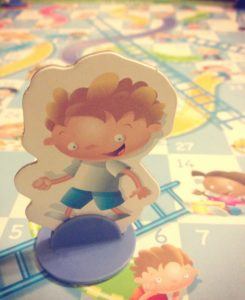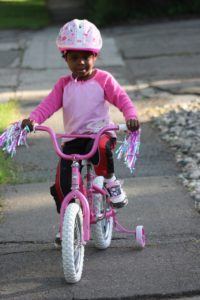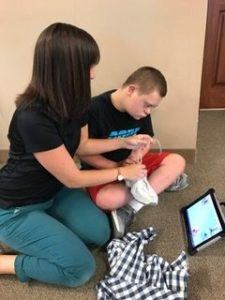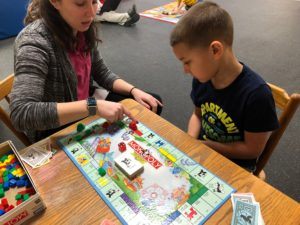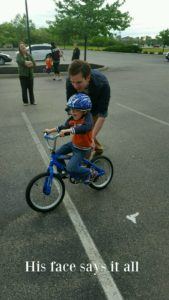Language
If you and others are having a difficulty time understanding what your child is saying and they are demonstrating speech sound errors, your child likely has an articulation or phonological disorder. Don’t let the long names or the word “disorder” intimidate you! These are simply referring to the intelligibility (or clarity) of your child’s speech and can be remediated by a speech-language pathologist. Here is a great chart to follow:
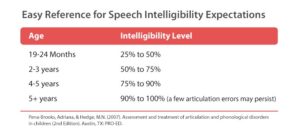
If your child is producing some speech sound errors beyond what is typical for their developmental age, and are considered “mildy” unintelligible, it is likely an articulation disorder.
Articulation Disorder- strategies for home carryover
1) Practice your child’s speech sound being targeted in therapy in a mirror!
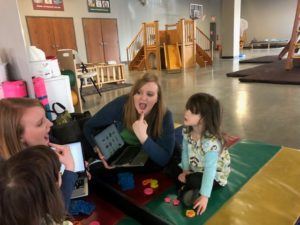
2) Practice your child’s speech sound in a book! This will increase their awareness of the targeted sound. Find books from your local library that have repetitive words with the appropriate speech sounds to target. (For example, if the sound is /g/, try “Go Dog GO!” by P.D. Eastman)
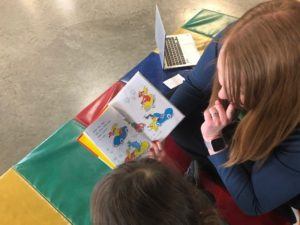
3) Draw attention to your mouth while speaking and use cues to your mouth so that the child can follow your cues for correct speech production on the targeted sounds.
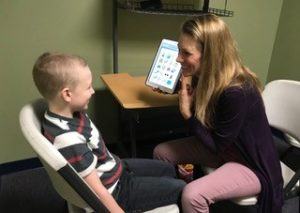
If your child is “highly” unintelligible due to an excessive use of phonological processes that are typical for development, then it is likely a phonological disorder. Please refer to the phonological processes chart from the American-Speech and Hearing Association (ASHA) here: https://www.asha.org/Practice-Portal/Clinical-Topics/Speech-Sound-Disorders-Articulation-and-Phonology/Selected-Phonological-Processes/
Phonological Disorder- strategies for home carryover
1) If your child is deleting final speech sounds in words, make a “snake” down your arm with your pointer finger and “stop” the snake to mark the final speech sound.
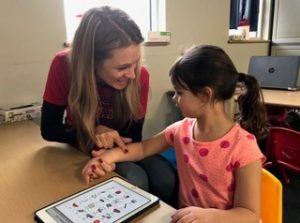
2) To increase awareness of speech sounds, hide your mouth using a small piece of paper and say a targeted word (with the speech sound targeted) correctly and correctly to see if your child can hear the difference and ask them to give you a “thumbs up!” or “thumbs down” to that word with the speech sound. (pic as follows) For example, say “ship” and “sip” if the child is having a difficult time producing the /s/.
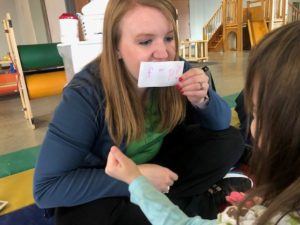
3) Minimal pair practice- using rhyming words that have the initial speech sound being substituted with the appropriate production. For example, if a child is producing the s/z, you would have the child say “sip” and “zip” or “sap” and “zap” so they can feel the difference of productions and increase their awareness of productions and practice the sounds.
At ABC, our ASHA certified and licensed speech-language pathologists can help remediate speech sound errors. Learning through play is crucial to your child’s development and we provide a sensory-enriched experience to allow for kids to target their speech sounds in a fun, play-based approach! Please visit our website https://www.abcpediatrictherapy.com for answers to your questions.
Read MoreWhat is it?
A tool to help parents know what their child should be doing and when. 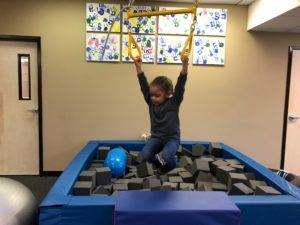
How does it work?
It is simple. Simply plug in your child’s birthdate. The gross motor, fine motor, language and sensory tasks that your child should do at that age will pop up. Answer the questions indicating what your child can and cannot do.
After submitting the tool, you will receive an email with tips and tricks on how to help your child at home. You also receive a FREE developmental checklist of all the skills a child should do between the ages of 1 and 6 years old.
Practice these age appropriate skills with your child. We hope you have success challenging them!
Let us know if we can help you.
Why did ABC Pediatric Therapy develop this tool?
ABC found that many parents do not know what to encourage and when. We want to help! This tool will teach you what toys to have and what skills to challenge at what age. Educate yourself! Be the best parent you can be! Challenge your child’s skills!
Who would find this tool useful?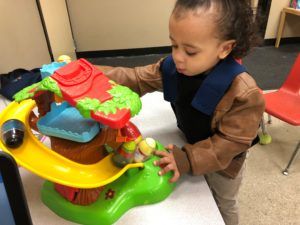
Any parent of a child under the age of 6 years old.
You can find this Interactive Screening Tool at checklist.abcpediatrictherapy.com. We hope you find it useful!
Visit our website at https://www.abcpediatrictherapy.com for more information on child development.
Read More- Speech Sound Grab Bag: Fill a medium sized gift bag or tote bag with small objects/pictures that begin (or end) with the targeted sound. Have your child take out each object and practice saying that word and talk about what he/she found. Your child will love digging into the bag and feeling the objects inside to see what is hidden inside!
For example: /k/ sound objects could include keys, (pretend) cookie, cup, kit-kat bar, rubber duck (quack-quack AND final /k/ in duck), book, ketchup packet, small stuffed animal cat, cork, can of soda or coke, small cake candle, pretend slice of cake, napkin, plastic/toy fork, packet of hot cocoa)
- Flashlight Game: Get out a flashlight and place pictures or objects that target the speech sound and place them inside child’s bedroom or other room, turn off the lights and have the child shine the light around the room to “find” the objects. Your child will love playing with the flashlight and searching for the cards or objects.

- Memory match up: Make small cards (with photos or clipart) with targeted speech sound so that you and your child
 can play the memory matching game. Place all cards face down and have your child see if they can remember where the cards are and whoever has the most matches wins the game.
can play the memory matching game. Place all cards face down and have your child see if they can remember where the cards are and whoever has the most matches wins the game. - Book Reading: Choose a book from your local library that targets the speech sound, read with your child (or maybe they can read to you!)
- Board Games: Incorporate your child’s favorite board game and upon taking a turn, have your child say a word 2-3 times targeting that speech sound (see if your child’s speech pathologist can give you a practice word list or photocopied pics). Game suggestions: Candyland, Chutes and Ladders, UNO, Guess Who?)

- Sound guessing game: Practice “sound discrimination” at
- home by hiding your mouth with a piece of construction paper. Say a word that begins with the targeted sound (i.e. “seat”) and ask the child, “Did I say the /s/ or the /sh/ sound?” Choose words that rhyme but begin with the targeted speech sounds. (i.e. cake/take)
- Build a “road” for cars: line picture cards for targeted speech sound face down, have your child help you build a “road” and turn over the cards as the car “drives’ along the road, saying the sound as the cards are turned over.
- B-I-N-G-O: Use a bingo board and markers/chips that contain pictures of the targeted speech sound. This is a great way to include multiple family members!
- Coloring: Use coloring sheets that include popular cartoon characters or scenes with targeted speech sounds. Sit with your child and have the child say one of the targeted words before receiving a crayon or marker to color a certain part of the coloring sheet. This way they are coloring as they are practicing the sounds.
- Baking or Crafting: Have your child bake or put together a craft and target that sound during the activity. Examples of targeted words: cookies, cake, rolling pin, pat-pat-pat, push, cookie cutters, shapes, cook, bake, hot, mix, stir, egg, break, roll, pull, glue, stick/sticky, cut, in, out.
With the holiday season fast approaching, many of us are beginning to think about the gifts we need to buy and what we hope to receive. It’s easy to get caught up in the latest trends of toys and technology, but one gift that keeps giving are books. Yes, books! Books may seem old-school to a few, but understanding the gift and power a book has is anything but boring. Reading books aloud to children offers many benefits to their development: books allow for more exposure to language, can increase a child’s vocabulary, and can increase a child’s imagination. Reading books early in life can help create a love of reading, which can last a lifetime.
There is always a new adventure to find behind every book. When children are read to regularly, they often have a larger vocabulary, understand more complex words, and have a better understanding and use of grammar. Reading books also helps children understand concepts such as letters, rhyming, identifying objects in pictures, asking/answering questions, and provides quality time for you and your child. When should you start reading to your child? Literacy skills can begin as early as 3-months of age, which may be seen when your child shows interest in a book by patting or chewing on it. This does not mean that parents need to begin reading to their children at 3 months of age, but it should let parents know that their child is beginning to develop literacy skills by being interested in a book. Some studies have indicated that the best time for parents to begin reading to their child is at around 8 months of age.
So, let’s talk about some great books and where to find them.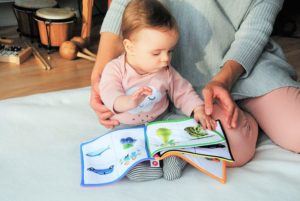
Beginner Readers-under 12 months through toddlers
A fan favorite is of course the bedtime story “Goodnight Moon” by Margaret Wise Brown, who tells the story of a bunny saying goodnight to everything around it. Additional books may include the beloved Dr. Seuss books such as, “Oh, the Places You’ll Go”, “The Cat in the Hat”, “Green Eggs and Ham”, “One Fish Two Fish”, etc.; the list of Dr. Seuss books goes on and on! More books for beginner readers may include “Curious George” by Margaret Ray, “Goodnight Gorilla” by Peggy Rathman, “Brown Bear, Brown Bear, What do you see?” by Bill Martin Jr. and Eric Carle, “The Very Hungry Caterpillar” by Eric Carle, and “Guess How Much I Love You” by Sam McBratney and Anita Jeram.
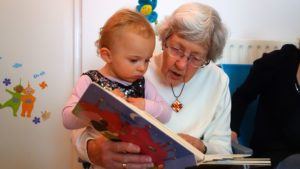
Pre-school and Kindergarten Age Readers (age 4+)
Some great books for slightly older children include: “Clifford the Big Red Dog” series by Norman Bridwell, “If You Give a Mouse…” series by Harper Collins, additional Harper Collins books such as “If You Give a Moose a Muffin”, Dr. Seuss books, “Little Critter…” series by Mercer Mayer, “Pete the Cat” series by Eric Litwin, and Berenstain Bears” by Stan Berenstain and Jan Berenstain
Elementary Age Readers: 1st Grade and Above
For children that are in the 1st grade or higher-grade levels, some books that they may enjoy include: “Magic Tree House” by Mary Pope Osbourn, “Junie B. Jones” by Barbara Park, “Magic School Bus” by Joanna Cole, “Dog Man” by Dav Pilkey, and “Captain Underpants” by Dav Pilkey.
Where to Find Books?
Books can be found in many different stores and online. The price of the book you are looking for may depend on where you buy it. Stores like Walmart, Barnes and Nobles, Half Price Books, and Target typically offer a larger selection of books at a reasonable price. Nowadays, it is easy to find and buy the book you are looking for online; sites such as Amazon offer convenient searches to find exactly what you want and are also reasonably priced. Parents can also buy books directly from the author’s or publisher’s website.
Buy a Book, Give the Gift of a Lifetime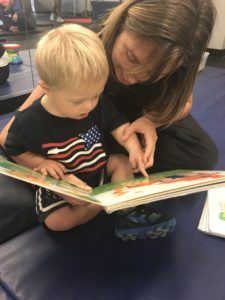
Books and the ability to read are gifts that lasts a lifetime. Books improve vocabulary, imagination, and literacy skills that will continue throughout a person’s life. As the holiday season approaches, consider getting your child or children some awesome books and open them up to a whole new world. A new adventure awaits behind every page! Happy Reading!
“The more that you read. The more things you will know. The more that you’ll learn. The more places you’ll go.”-Dr. Seuss
Find more books from pre-k through grade 9! https://shop.scholastic.com/parent-ecommerce/featured-shops/books-by-grade.html
If you have questions about your child’s development, visit ABC Pediatric Therapy Network’s website at https://www.abcpediatrictherapy.com
Read More
The holidays are just around the corner and family and friends will be wondering what to get your child this year. With hours spent at school, popular video games and TV shows, children are sitting more and more. This year consider some of the following ideas to get your child moving and help support their development!
Gift ideas for Elementary aged children:
-kinetic sand or sand box with shovel and bucket
-make your own sensory bins: fill containers with beans, rice, water beads, etc and hide holiday items inside for your child to find
-Print your own Christmas songs with movement book such as this one from: https://www.fantasticfunandlearning.com/christmas-songs.html
-cookie/gingerbread decorating kit
-Puzzles
-velcro dart board
-bean bags – great for a variety of games such as a child sized corn hole game or large-scale tic tac toe
-social skills board game
-fine motor tools kit
-Bike
-building sets such as lego or playmobile
-swing set or single swing that can be used indoors
-playground set
-toys with latches and keys
-chalkboard/dry erase board with writing tools and magnets
-art supplies
– lacing kits
-sports kits (goal with soccer ball, t-ball set, golf set, hockey sticks and net, basketball hoop, etc)
-get creative with obstacle courses to get your child up and moving: you can wrap your own kit with balance discs or domes, hurdles, tunnels, etc. You can also use household items such as cushions and steps to set up during play time. Doing a puzzle by crossing the obstacle course to place it in, is a fun way to make your gifts even more interactive
-put a holiday spin on household favorites. For example, if your child loves playdough, you can make your own candy cane dough, put tinsel/sparkles inside of the dough, or make your own slime!
If you have questions about your child’s development, visit our website at https://www.abcpediatrictherapy.com
Read MoreASAP, YMCA, RSVP. Acronyms are all around us, permeating our lives and activities. Sometimes we truncate words just for the heck of it, “kay” instead of “okay” or “app” instead of application. Then there’s the world of healthcare and medicine, and suddenly everything is a jumbled mess of alphabet soup. It’s hard to keep track of what all the acronyms and abbreviations stand for, so today’s focus is on AAC. It stands for Augmentative and Alternative Communication.
That’s a lot of words and letters to type; healthcare professions like the quick version “AAC” much better. As parents, it’s a lot scarier to hear another clump of letters without really understanding what it means. AAC is basically a way for individuals to get help (augment) or replace (alternative) communicatio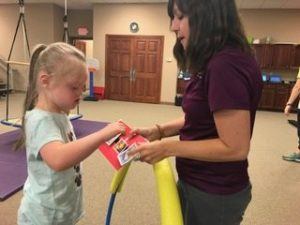 n. AAC can come in a high tech form or a low tech form.
n. AAC can come in a high tech form or a low tech form.
Low tech AAC is anything that doesn’t get programmed with a digital voice, message, or screen. There is a low tech form of AAC called Picture Exchange Communication System (sorry, it’s another acronym: PECS), which is all about requesting and then commenting using special pictures. Other low tech forms of AAC could be a book full of pictures people can point to for requesting or even a book of common people or activities in their day-to-day life. High tech AAC (think Stephen Hawkings) is about ease of access, comfort of use, and typically is used by communicators with a little more ability to understand the complexity of a more complicated system, although preschoolers to the elderly can use high or low tech AAC.
High tech AAC can be as simple as one giant, clicking button, called a switch. Some switches have 1 big button, others have a few smaller buttons. Each button holds a single, recorded message. When the communicator bumps or hits the switch, the message plays. AAC can also be as complicated as an IPad application or specialized, portable machine that’s only job is to talk. These higher tech devices come with programmed software from screen layouts of 4 to 50 full of vocabularies, subjects, word prediction, keyboards, games, search functions, access to the internet for social networking, and the list of possibilities goes on.
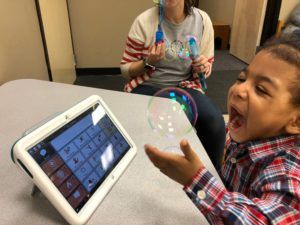
Now that we’ve had a quick background, the initial fear of the unknown should be fading…and all the questions are forming. The first thing to realize is that AAC can either augment language where it boosts, helps, and lifts a speaker’s verbal communication or it can be an alternative for them, or the third option: AAC can do both augment and be an alternative. Simply because a kiddo needs AAC doesn’t mean they don’t need their voice. Having goals in therapy to address AAC doesn’t mean your child isn’t learning to use their verbal words. In no way does it mean a child’s verbal and expressive language skills will fade, stop, or never grow. In fact, the truth is that AAC does the opposite. It makes verbal language explode. AAC gives children with a variety of diagnoses, disorders, delays, and deficits the ability to communicate with adults, teachers, and peers who may not have understood them before. It teaches children to actively seek out communication partners, to make requests, and to share their thoughts and ideas in a way that without the AAC would likely not have happened. AAC gives children opportunities. AAC gives children confidence. AAC gives children power. AAC gives children models, repetitions, and examples of more words than they would have had access to on their own, and soon, the children have heard the word enough from the AAC, that they can start verbalizing it on their own. AAC is fully customizable, modifiable, and portable. It goes where your child goes, can be used as your individual child needs, and there is no limit to the potential for their language. AAC is kind of like pixie dust…a little sprinkle can transport a child to Never Neverland: a new world of wishes, wonder, and words that they’ve never, never seen before…and you get to go along for the ride.
Read MoreAre you having trouble motivating your child to practice their speech and language skills at home? Your child’s speech therapist is likely assigning tasks to practice at home throughout the week to reinforce the skills they’re learning in therapy. Home practice can make a huge difference in their progress and usually means faster improvement. Speech therapy isn’t an easy fix and it requires a lot of hard work and consistent practice over many months or even years. Home practice does not have to be boring! Below is a list of applications, websites, and games that you can utilize to make home practice fun:
- Applications

o My PlayHome
- Compatibility: iPhone, iPad, and iPod touch
- Price: $3.99
- Description: My PlayHome is an interactive doll house game that contains a variety of male and female characters that can eat, drink, cook, shower, sleep, and so much more. Your child can explore every room in the house while enjoying the colorful and detailed illustrations.
- How to use it:
- Expressive language skills: Labeling actions and common objects, producing regular and irregular past tense verbs, answering wh- questions, describing picture scenes, telling how common objects are used, naming categories, producing he/she pronouns and regular plural -s.
- Receptive language skills: Identifying common items, understanding verbs in context, understanding use of common objects, following directions, and understanding pronouns.
- Why it works: My patients absolutely love this game. It is so fun and motivating- they don’t even realize they are working on a variety of language skills!
o Articulation Station
- Compatibility: iPhone, iPad, and iPod touch
- Price: Lite version is free, individual sounds range from $3.99 to $7.99, and full version is $59.99
- Description: The application includes 22 different sounds and 6 engaging articulation activities to help your child speak and pronounce their sounds more clearly.
- How to use it: Select the individual sound(s) your child is working on in speech therapy and practice at the word, phrase, sentence, or story level.
- Why it works: The application is fun, colorful, and engaging. You can practice your child’s sounds through flashcards, matching games, rotating sentences, unique sentences, and stories. The activities are so fun that my patients often forget they are “working” on their articulation skills.

- Websites
o Home Speech Home
- Link: https://www.home-speech-home.com/
- Description: Home Speech Home is a website created by two certified speech-language pathologists. This website offers a variety of activities and word lists to practice articulation, apraxia, language, and stuttering principles. In addition, speech and language developmental norms and an overview of various speech and language disorders are also included.
- How to use it: I frequently utilize the word lists feature with my older patients. I select the specific sound(s) that my patient is working on and incorporate the words while playing their favorite board game or within conversation. You can practice their articulation skills at home with premade words, phrases, sentences, and stories.
o Mommy Speech Therapy
- Link: http://mommyspeechtherapy.com/
- Description: Mommy Speech Therapy is a website created by a certified speech-language pathologist. This website offers a variety of free articulation worksheets that include colorful pictures of your child’s specific target words, as well as helpful tips and tricks on how to increase your child’s speech and language skills at home.
- How to use it: You can select your child’s specific sound(s) and print out the associated free articulation pictures, cut them into individual pictures, and play a variety of games at home. You can hide the pictures around the house and have a “scavenger hunt” and ask your child to name the pictures when they find them. You can print out an extra page and play Go Fish or a matching game with the pictures while reinforcing their articulation skills. The options are limitless!
- Games

o Guess Who
- How to play: You can target a variety of language and articulation skills with this classic board game. Guess Who is great for working on he/she pronouns, asking questions, answering yes/no questions, producing grammatical forms (e.g. do/does, has/have), and articulation skills at the conversational level.
o Hedbanz
- How to play: Hedbanz is a fun way to work on naming categories, answering yes/no questions, turn taking, and articulation skills while your child guesses the identity of the card they’ve been dealt.
o Simon Says
- How to play: Simon Says is a quick and easy game to work on identifying common objects (e.g. body parts), following one-step directions, as well as directions of increasing length and complexity.
If you have questions about your child’s speech and language skills please contact ABC Pediatric Therapy Network at https://www.abcpediatrictherapy.com.
Read MoreLarge Motor:
Bike or scooter riding
Jump rope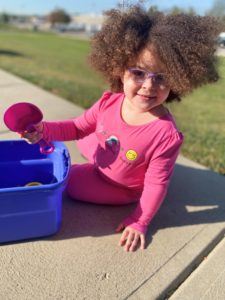
Throw, kick and catch a ball
Hit a ball with a racket or bat
Swim
Hike
Outdoor sports like kick ball, baseball, soccer
Follow a line of sidewalk chalk along a jagged and curved path.
Water balloon toss or water balloon baseball
Hopscotch
Small motor, Sensory and Motor Planning:
Sidewalk chalk
Scavenger hunt outside (find something: rough, smooth, green, pink, on top, under etc)
Obstacle course outside
Swim for balls or diving toys with sight words
Fill spray bottles with liquid watercolors, spray on easel outside with watercolor paper.
“Paint” with water, get out the old paintbrushes, paint rollers and mops along with a bucket of water and have the kids “clean” or “paint” the deck or pavement.
Paint rocks or a flower pot for the garden
Catch fireflies
Pick flowers
Make paper airplanes
Make ice cream or popsicles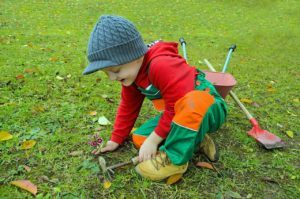
Play I-Spy on road trips
Leaf rubbing
Plant flowers
Make a windsock
Language:
Swim for balls or diving toys with speech words on them
Name items that start with certain letters or sounds while taking a walk
Talk about what is on top/under/next to while running errands
Ask Who, What, When, Where questions
Describe items outside or on road trips
If you have concerns about your child’s development, go to http://checklist.abcpediatrictherapy.com and fill out this checklist about your child. You will receive tips and tricks on how you can help your child. You will also find much information at https://www.abcpediatrictherapy.com.
Read More
Story telling has been a part of our history since the ancient days. Story telling can be seen on cave art, Egyptian hieroglyphics, and in ancient texts. It was a way for us to retell our past accomplishments, defeats, and history to younger generations who had not experienced them. Since oral stories could be manipulated and changed based upon the story teller, written text began to evolve and preserved the stories from ancient times. Today we use stories to provide education, history, and entertainment through television, books, and our imagination. 
While story telling might seem easy for some, for children with speech and language difficulties it can be a challenging task. Children with speech and language difficulties may have a harder time understanding the parts of a story, sequencing the events, and using appropriate language. They may have a hard time understanding abstract concepts such as a made-up land with dragons and magic powers. Children may even have difficulty in retelling personal events that have actually happened to that child! These challenges can have serious implications in social skills, academics, and confidence.
How can we help children become good storytellers? One of the most important factors would be to exposure to good storytelling. These types of stories would include children’s book, retelling past events that the child was a part of, and making up stories that contain appropriate story elements. Boys and girls need to be exposed to good story telling in order to begin becoming storytellers.
Secondly, allow young readers to choose the story that they want to hear. Children are more likely to maintain attention to stories that they enjoy. When one maintains attentions, they learn. Stories that are boring will not teach how to become a storyteller, because the child will not be listening to the story or understanding how a story is made.
To help increase understanding of stories, make sure you talk about the parts of a story such as who is in the story (characters), where do they live and what does it look like (setting), what is the story about (plot), what is the problem (conflict), and how the characters fix the problem.
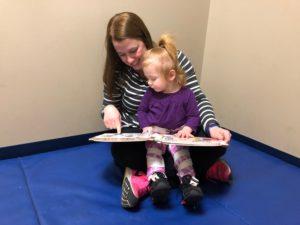 Another element to storytelling to consider is expression. The expression of the way a story is told and the expressions of the characters are a vital part of learning. As humans, we feel emotions, so why wouldn’t the character in our stories feel emotions too? So be expressive when storytelling! When reading a story, ask your child how a character might feel and why; help them if they need it by providing options and explanations.
Another element to storytelling to consider is expression. The expression of the way a story is told and the expressions of the characters are a vital part of learning. As humans, we feel emotions, so why wouldn’t the character in our stories feel emotions too? So be expressive when storytelling! When reading a story, ask your child how a character might feel and why; help them if they need it by providing options and explanations.
Break the story down into first, then, and last parts. For children that have difficulties sequencing events, breaking a story into three basic parts may be helpful. This should be done with a story that is familiar. Once you read the story help the child break it up into the three most important parts. Once they have mastered that, then help them sequence longer events of stories. Use pictures to help your child describe what is going on.
Wordless picture books are a great resource for young readers who have not developed literacy skills. Wordless picture books are a way for children to tell stories while providing them with a visual support. This also helps tap into their imagination and use vocabulary. Some wordless picture books for young children include: Goodnight Gorilla, Hug, Pancakes for Breakfast, and Have You Seen My Duckling?. Additional wordless picture books include: The Lion & the Mouse, Good Dog Carl, and The Snowman.
If your child is still having difficulties with stories, understanding story elements, and/or experiencing difficulty in retelling a story, contact a speech therapist at ABC Pediatric Therapy Netwo rk and request a speech and language evaluation to determine the specific areas your child is having difficulties with. Visit our website at https://www.abcpediatrictherapy.com to learn more on how to challenge your child.
rk and request a speech and language evaluation to determine the specific areas your child is having difficulties with. Visit our website at https://www.abcpediatrictherapy.com to learn more on how to challenge your child.
Answering and asking questions is an important part of learning. We ask questions in order to learn more information about something, and we answer questions to provide more information. Asking and answering questions is not only a part of how we learn, but it is also a part of our social skills; we ask and answer questions to be polite and build and maintain relationships. Types of questions we ask and answer include “who”, “what”, “where”, “when”, and “why”.
Answering questions involves having a child hear the question, think about the meaning of the question, understand the meaning of the question, form an answer, and speak the answer that they formed. Asking questions involves thinking about what you want ask, forming the question in your mind, and then producing the question that you want to ask. For children with speech and language delays, asking and answering questions can be a challenge. This challenge in asking and answering questions may affect their ability to learn and their ability to develop and build relationships.
Believe it or not some questions are easier to ask/answer than others. “What” questions are the easiest to learn, followed by “Who”, then “Where”, followed by “When”, and finally “Why”; “Why” questions being the most difficult for children to learn and master.
The following is a basic guideline on the types of questions a child may ask/answer according to their age. More information can be found at: https://parentresourcesblog.files.wordpress.com/2013/05/questions-development.pdf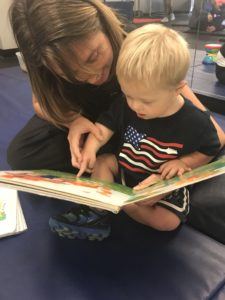
· Between 12-24 months, a child should be able to answer basic “What’s this?” questions about familiar objects, answer basic “where” questions by pointing, answer basic yes/no question by shaking their head or nodding, and use a rising pitch in their voice to indicate that they are asking a question (e.g., Daddy? to ask “Where is daddy?”)
· Between 24-36 months, a child should point to objects being described (e.g., “Where do you wear a hat” and the child points to their head), answer longer “Where”, “What…doing”, and “Who is” questions, understand “Can you” questions, ask questions to get their basic wants/needs met (e.g., “where cup?”), and ask one-word “why?” questions
· Between 36-48 months, a child should answer more complex questions, answer questions about object functions (e.g., what do you do with a spoon), and answer “if…what” questions (e.g., if you get sick, what would you do?)
If you find that your child is having difficulty asking/answering questions determine the type of question(s) that is the most problematic. Once you have figured out the type of question that is challenging for your child, talk about what it means to ask/answer that type of question. For example,
· “what” means we are talking about a thing, such as the dog, the house, a cracker, etc.
· “who” means we are talking about a person, like mommy and daddy, grandma/grandpa, etc.
· “where” means we are talking about a place or location, such as the park, our house, or in the kitchen.
· “when” means a time, such as daytime/nighttime, breakfast, summer, yesterday, or even a month like December
· “why” means a reason, such as I fell down because I tripped on a rock.
Once you have talked about the type of question that is troublesome, use games and activities involving questions to teach your child about asking/answering questions while having fun at the same time. Games and activities could include, but are not limited to: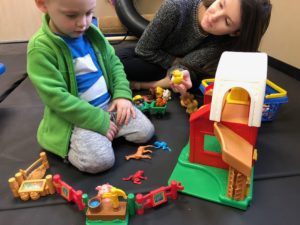
· “Wh” Bingo
· I Spy
· Asking questions while reading a book
· Asking questions while playing with toys (e.g., Where is the cow? What animal is this?)
· Headbanz Game
If your child is still struggling to ask/answer questions or other speech and language skills, it is recommended to seek out a Speech and Language evaluation from your local Speech Therapist to determine if your child would qualify from services to improve these skills. For more information visit https://www.abcpediatrictherapy.com
Read More Skip to content
Skip to content
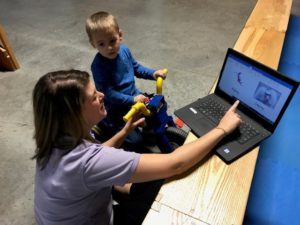
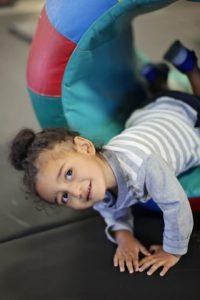
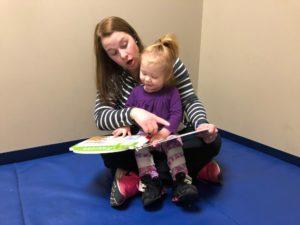
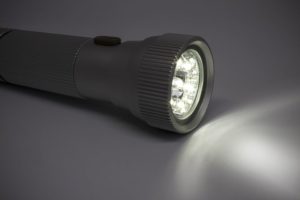
 can play the memory matching game. Place all cards face down and have your child see if they can remember where the cards are and whoever has the most matches wins the game.
can play the memory matching game. Place all cards face down and have your child see if they can remember where the cards are and whoever has the most matches wins the game.